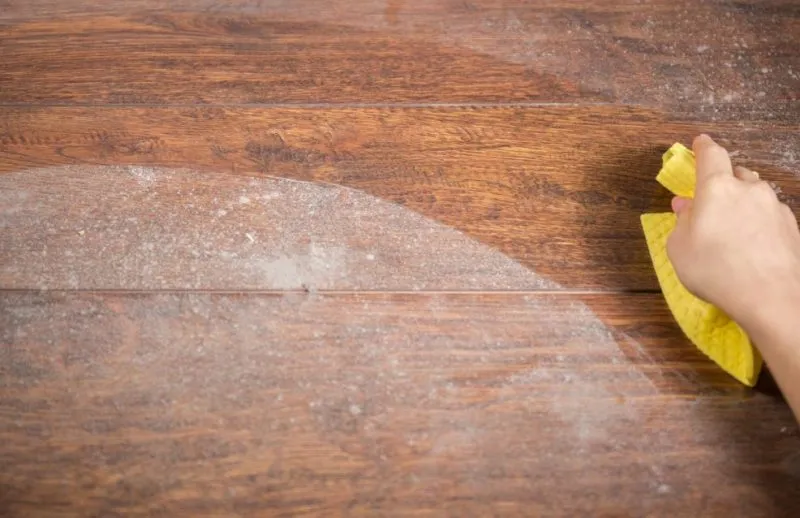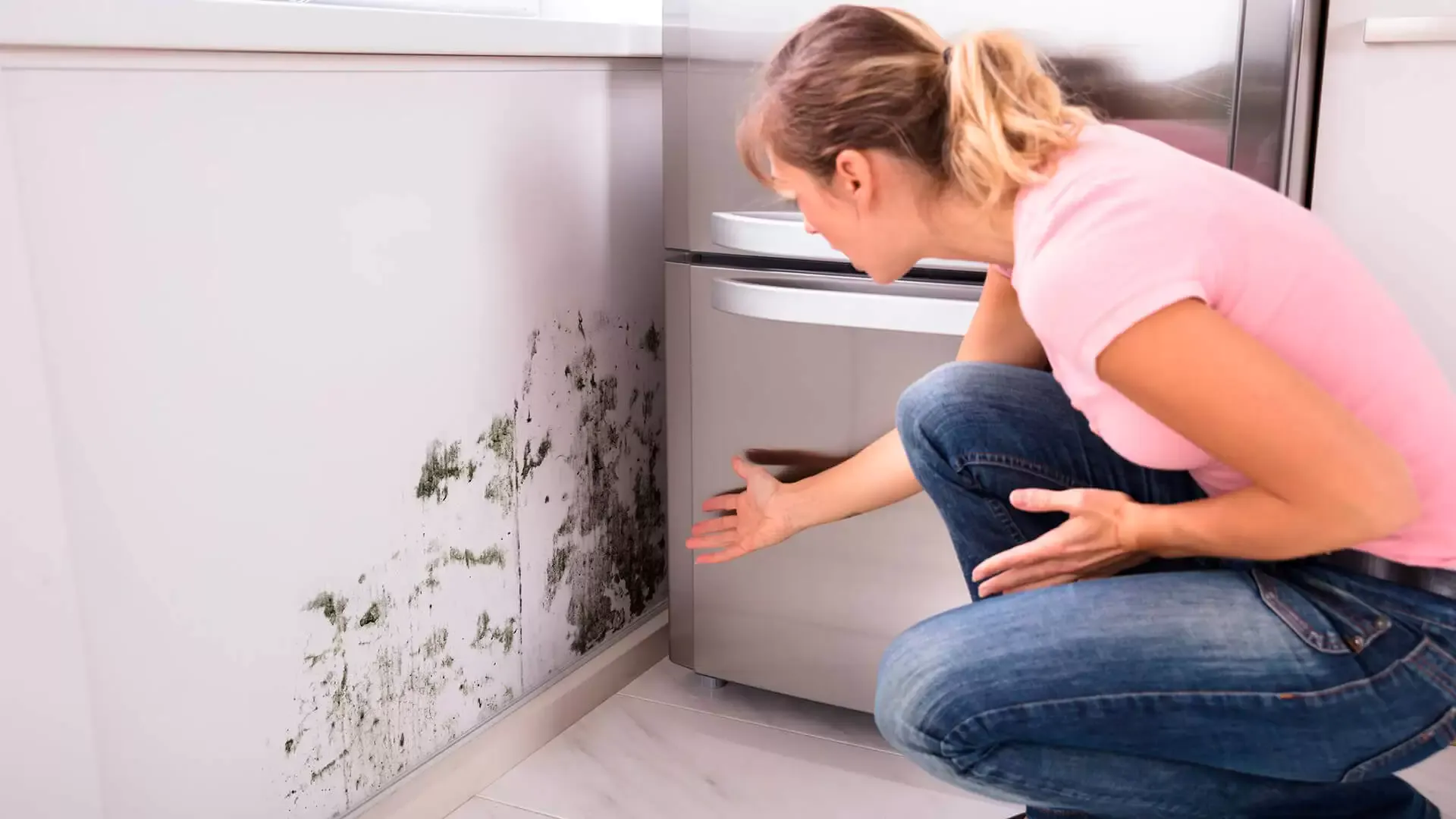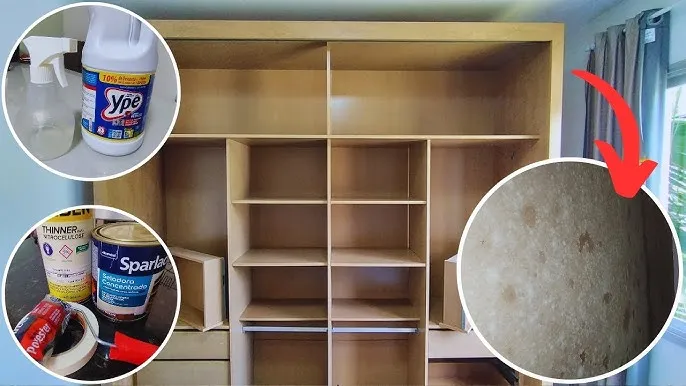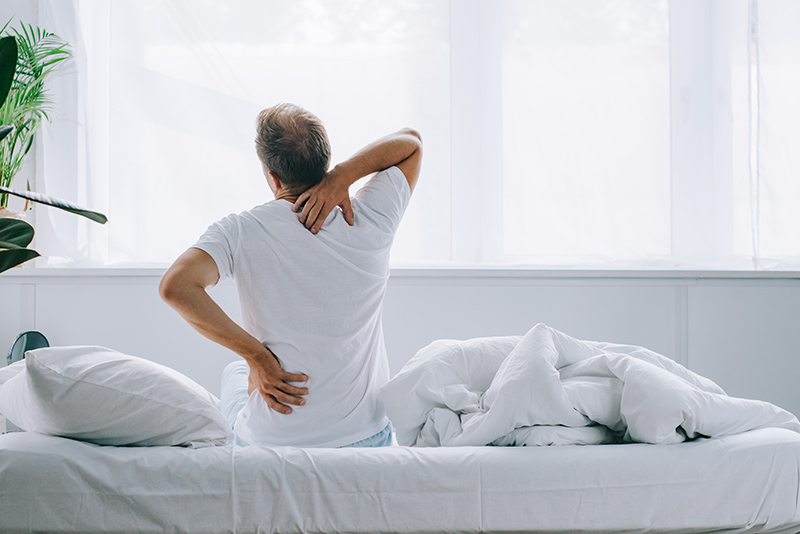How to Prevent Mold in Closets and Rooms: Everything You Need to Know
Discover the best techniques to prevent and eliminate mold at home. Complete guide with DIY recipes, effective products, and practical tips to keep your furniture and rooms mold-free.
If you've ever discovered those dark stains in the corners of your closet or caught that telltale musty smell when opening a drawer, you're definitely not alone. Mold is a common household problem that can strike any home, especially during humid seasons or in poorly ventilated spaces.
The good news is that fighting mold doesn't have to be a losing battle. With the right techniques and some products you probably already have at home, you can not only eliminate existing fungi but also create an environment where they simply can't thrive.
In this comprehensive guide, you'll discover everything from the root causes of mold growth to effective DIY recipes, recommended products, and prevention strategies that actually work. Get ready to transform your home into a healthy, mold-free environment once and for all.
Table of Contents
- What Is Mold and Why Does It Appear
- Main Areas Where Mold Develops
- How to Prevent Mold Growth
- DIY Recipes to Eliminate Mold
- Effective Commercial Products
- Specific Treatment for Each Surface
- Health Considerations
- Maintenance and Cleaning Routine
What Is Mold and Why Does It Appear
Mold is simply a type of microscopic fungus that develops in environments with specific characteristics. These organisms are always present in the air through invisible spores, just waiting for the ideal conditions to multiply.
The perfect recipe for mold growth includes high humidity (above 60%), poor air circulation, moderate temperatures, and organic matter to feed on. That's why closed closets, especially those pushed against walls, become true havens for these fungi.
Contrary to what many people think, the problem isn't with the furniture itself, but rather with the environmental conditions. A solid wood closet can develop mold just as easily as an MDF one if the environmental conditions are right.
Mold spores are carried through the air and settle on damp surfaces, where they begin to multiply. Within days, those nearly invisible dots transform into the dark stains we recognize, accompanied by that characteristic musty odor.

Main Areas Where Mold Develops
Understanding the areas most prone to mold development is crucial for creating an effective prevention strategy. Each room in the house presents unique characteristics that can favor fungal growth.
Bedrooms and Wardrobes
Bedrooms are especially vulnerable at night when we keep windows closed and humidity from breathing can reach 70%. Wardrobes pushed against walls, especially those that stay closed all the time, create perfect micro-environments for mold.
Bathrooms
After a hot shower, bathroom humidity can reach an impressive 90%. Without proper ventilation, this moisture condenses on cold surfaces, creating the ideal environment for fungi.
Kitchen
During meal preparation, especially when cooking with covered pots or boiling water, kitchen humidity can hit 75%. Cabinets near the stove or sink are particularly vulnerable.
Basements and Pantries
These naturally more enclosed environments with less air circulation maintain humidity around 75%, especially if they don't receive direct sunlight.
How to Prevent Mold Growth
Prevention is always more effective and economical than treatment. Implementing some simple daily practices can make all the difference in the fight against mold.
Ventilation is Key
Open windows and doors daily, even during winter. Just 30 minutes of ventilation per day makes a significant difference in air renewal and humidity reduction. For closets, leave doors open at least once a week for several hours.
Humidity Control
Keep relative humidity between 40% and 50%. On very humid days, use dehumidifiers or air conditioning in "dry" mode. A practical tip is to use moisture absorbers like smart home devices that can monitor and control humidity levels automatically.
Proper Furniture Positioning
Leave at least 2 inches of space between furniture and walls. This gap allows air circulation and prevents condensation points from forming. If possible, position furniture away from exterior walls, which tend to be colder and more humid.
Care with Clothes and Objects
Never store damp or semi-dry clothes. Make sure they're completely dry before storing. For winter clothes stored for long periods, take them out occasionally for sun airing.

DIY Recipes to Eliminate Mold
When prevention wasn't enough and mold has already settled in, there are several effective and economical homemade recipes to combat it.
Vinegar and Baking Soda Solution
This is one of the most powerful combinations against mold. Mix 1 cup of white vinegar with one teaspoon of baking soda. The mixture will foam - wait for it to settle before putting it in a spray bottle. Apply to mold, let sit for 10 minutes, and remove with a clean cloth.
Bleach for Resistant Surfaces
For walls, tiles, and surfaces that can handle stronger products, mix pure bleach in a spray bottle. Apply directly to mold, let sit for 20 to 40 minutes until stains lighten, then clean with a damp cloth. Important: keep the area ventilated during use.
Fabric Softener Solution
A gentler, more fragrant alternative: dilute one capful of fabric softener in a quart of water. This solution is ideal for monthly preventive cleaning of closets, leaving a pleasant aroma.
Natural Desiccants
Make sachets with crushed chalk or place small containers with coarse salt in closet corners. These materials naturally absorb moisture from the environment. Smart home humidity sensors can also help you monitor moisture levels in real-time.
Effective Commercial Products
While homemade recipes are effective, commercial products offer convenience and often longer-lasting results.
Specialized Mold Removers
Professional mold removal products are excellent options for intensive treatment. Their formulas with fresh fragrances not only remove existing mold but also help with prevention.
Professional Moisture Absorbers
For continuous maintenance, professional moisture control products offer prolonged protection. With different fragrances (neutral, lavender, and fresh), they provide not only humidity control but also a pleasant aroma to environments.
Products for Large Quantities
For homes with chronic humidity problems, consider bulk moisture control solutions. It's an economical solution for treating multiple environments simultaneously.
Anti-Mold for Prevention
Anti-mold products are ideal for preventive maintenance. Their floral fragrance keeps environments always fresh while controlling humidity.
When setting up your home office space, proper ventilation and humidity control are crucial. Check out our guide on home office desk essentials that includes tips for maintaining a mold-free workspace. Quality home office desk essentials can help create a healthier work environment.

Specific Treatment for Each Surface
Each type of surface requires a specific approach for effective mold removal without causing damage.
Fabrics and Dark Clothes
For dark clothes, use only pure white vinegar in a spray bottle. Apply directly to stains, let sit for 20 minutes, and wash normally. For delicate fabrics, test first on a small, less visible area.
White Clothes
White clothes can handle more intensive treatment. Mix 5 tablespoons of bleach with 2 tablespoons of heavy-duty detergent. Soak for 40 minutes, gently scrubbing every 10 minutes.
Upholstery and Furniture
For upholstery, mix 3 tablespoons of baking soda with 1 tablespoon of club soda, add warm water until it forms a paste. Apply to stains, let sit, and remove with a clean, damp cloth.
Wood and MDF
On wood furniture, use the vinegar and baking soda solution, but apply with a lightly dampened cloth, never soaked. Dry immediately with a dry cloth and let the furniture air out before closing again.
Walls and Ceilings
For painted walls, use a ratio of 1 part bleach to 3 parts water. On plaster surfaces, test first in a small area. Never use bleach on PVC as it can cause yellowing.
For maintaining clean surfaces throughout your home, consider investing in quality vacuum cleaners that can help remove mold spores from carpets and upholstery. Our comprehensive guide on robot vs traditional vacuum cleaners can help you choose the right option for your needs.
Health Considerations
Mold isn't just an aesthetic problem - it represents a real health risk, especially for people with pre-existing respiratory conditions.
Health Risks
Mold spores can aggravate asthma, bronchitis, allergic rhinitis, and sinusitis. People with compromised immune systems are at even greater risk. Symptoms like persistent cough, frequent sneezing, eye irritation, and breathing difficulties may be related to mold exposure.
Protection During Cleaning
Always wear a mask, gloves, and protective eyewear when cleaning areas with mold. Keep the environment well-ventilated and avoid staying too long in the area during chemical product application. If you have respiratory allergies, consider asking someone else for help.
When to Seek Professional Help
If mold covers an area larger than 10 square feet, or if it returns quickly after cleaning, it's time to seek professional help. Structural problems like water infiltration require specialized intervention.
Inadequate removal can spread spores to other areas of the house, worsening the problem. Professionals have specific equipment and products for safe and effective treatment.

Maintenance and Cleaning Routine
Establishing a maintenance routine is fundamental to keeping your home permanently mold-free.
Weekly Routine
Open all closets and drawers at least once a week, letting them air out for several hours. Check for initial signs of mold, especially in corners and less ventilated areas. A well-structured cleaning routine makes all the difference in prevention.
Monthly Routine
Do monthly preventive cleaning with a vinegar and water solution (1:1) on all interior surfaces of closets. Replace or refill moisture absorbers. Take out seasonal clothes for sun airing.
Seasonal Routine
With each season change, do deeper cleaning. Remove all items from closets, thoroughly clean interior surfaces, and let air dry. It's also the ideal time to reorganize and optimize space.
Continuous Monitoring
Keep a hygrometer at home to monitor relative air humidity. Install exhaust fans in bathrooms and kitchens if you don't already have them. Consider investing in an LED lighting system that generates less heat and humidity.
For better air circulation, consider upgrading your home's ventilation with quality fans or air conditioning units. Our guide on fans vs air conditioners can help you make the right choice for your climate and budget.
Extra Preventive Actions
For naturally more humid environments, consider using an electric dehumidifier. Keep curtains and rugs in airy places, or temporarily remove them if the problem is recurring. Paint walls with anti-mold paint and always keep gutters and roofs clean to prevent infiltration.
Proper kitchen ventilation is also crucial for mold prevention. Learn more about keeping your kitchen clean and organized, which includes tips for preventing moisture buildup. Quality kitchen appliances and accessories can help maintain proper air circulation and reduce humidity.
Conclusion
Fighting mold in closets and rooms is a matter of knowledge, consistency, and prevention. With the right techniques and products, you can not only eliminate existing fungi but create an environment where they simply cannot develop.
Remember that proper ventilation and humidity control are your greatest allies in this battle. DIY recipes are effective and economical, but specialized products can offer convenience and longer-lasting results when necessary.
The most important thing is to act quickly when you identify the first signs of mold and maintain a constant prevention routine. Your health and the durability of your furniture and clothes will thank you. With these strategies, you'll have a home that's always healthy, fungus-free, and with that fresh aroma we all love.
For those looking to create the perfect indoor environment, consider investing in quality furniture like comfortable sofas with proper ventilation design, or upgrade your bedroom with breathable mattresses and bedding that help regulate moisture. You can also check our comprehensive guides on the best sofas to buy in 2025 and choosing the ideal mattress for back pain to create a healthier living space.

